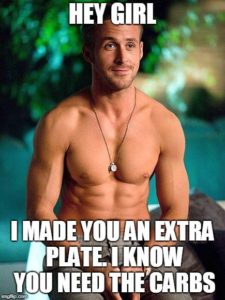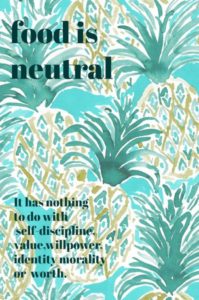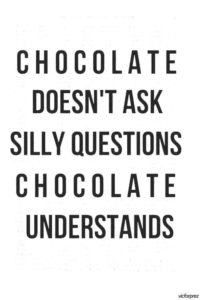As a macro counting beginner, we suggest making it as simple as possible by eating whole foods and logging everything. Eating whole foods doesn’t mean you actually have to shop at Whole Foods and spend your whole paycheck. (Though we are super fans of Amazon’s changes to the grocery chain).
Whole Foods or whole foods?
When we talk about eating whole, real foods, we are talking about primarily staying on the outside of the grocery store. If you think about the perimeter of the aisles, what foods do you find there? Produce, meat, dairy, and maybe your run of the mill olive bar. All of these foods come from the earth, and most of them are relatively unprocessed.
Stay towards the outside of the grocery store when you’re making your rounds. It’s an excellent way to keep yourself laser-focused on the foods that will give you the most nutritional bang for your buck.
We understand that some of these whole foods more expensive than the foods you can find inside the aisles. While that may be true, in this case inexpensive = cheap = lacking nutritional value.*
*Let us make a small exception here: There are certain foods that you’ll find in the aisles that are nutritionally dense, i.e. nut butters, beans, rice, oatmeal, and even salsas and sauces. *
I’m definitely not a beginner grocery shopper, but I don’t want to spend all of my money on food.
Lucky for you, you’re in the right spot! Check out our tips for making your grocery store trip as inexpensive and easy as possible.
Tip 1: Plan ahead and determine what you’ll eat during the week.
Figuring out your meals for the week will not only save you the headache when it comes down to crunch time, but will also save you big bucks. Simplify everything by knowing exactly what you need to buy to make your week’s meals and cut down on unnecessary spending!
Find a few functional, printable, and free meal planning templates here.
Tip 2: Write out a grocery list that includes strictly grocery items.
When you don’t have a list written out before you head out on your grocery trip, you are more likely to buy items you don’t need. If you plan ahead and figure out what you want to eat during the week (AKA Tip 1), making a list is much easier to manage.
Tip 3: Don’t be afraid to travel to different stores to find the best deals.
I’ve reached a point where I could shop with my eyes closed and still be able to pick up exactly what I need for the week. I find that certain stores are better and less expensive for certain items than others. Aldi, Trader Joe’s and Kroger seem to be my favorite three- give them a go! Their business models and coupons (like the additional savings you can find on the Kroger app) are wallet friendly.
Tip 4: Buy frozen vegetables and fruit and stock up on clearance items when you can. Avoid convenience foods.
Opt for foods that might take a little extra prep time on your end, like unpackaged greens or uncut fruit. Buying precut, prewashed or prepackaged produce often marks up the price.
Frozen veggies and fruit can be much cheaper than buying them fresh, and will last you longer. If you’re trying to buy organically, buying frozen is a great way to save some change. Not to mention, frozen produce keeps its nutritional profile for longer.
Don’t be afraid of the clearance section! If you’re planning on cooking, eating, or freezing a clearance-marked food within the next 24 hours or so, it is a wallet-friendly option. Obviously, if the meat or produce is looking a little sketchy (i.e. wilted, moldy, or grey), skip it.
Tip 5: Shop on a full stomach and when you’re not stressed out or tired.
When you’re hungry and tired, or hangry, you tend to gravitate towards highly palatable/highly processed foods. This is the case whether you’re shopping the aisles of the grocery store or the shelves in your pantry. If you have to go to the store while you’re feeling anything other than jovial, we recommend sticking to the stores that you know so you can get in and out quickly. Less distraction, less frustration, more happiness!









